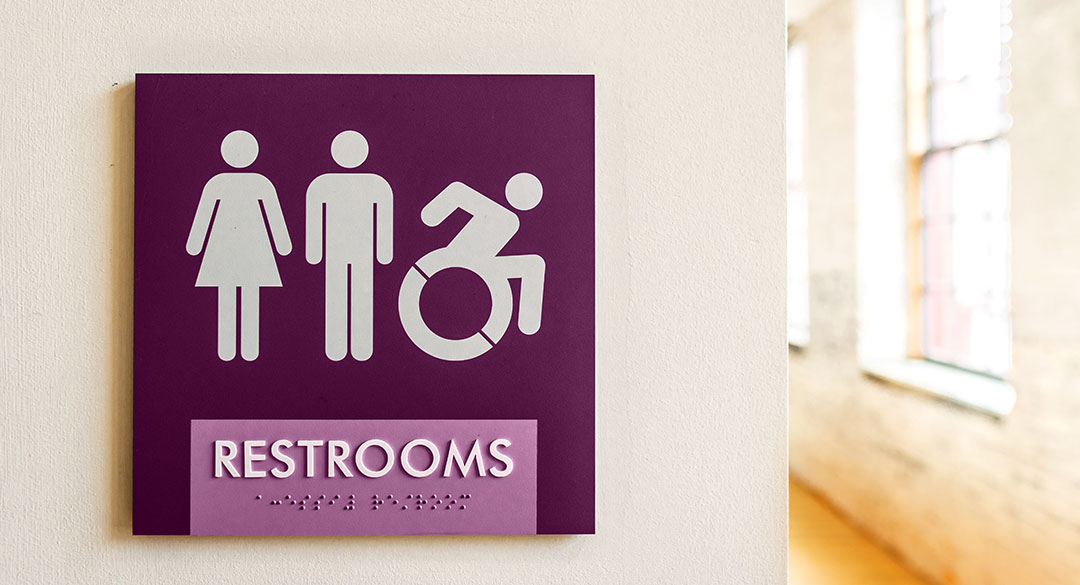If you can’t control your bladder, is it controlling you?

Are restless nights due to frequent bathroom trips disrupting your life? Do you feel like you can’t enjoy time away from home? You can’t control it, and you can’t ignore it. It’s that “gotta go” feeling that causes a frequent and urgent need to empty your bladder, even when it’s not full.7
Urge Urinary Incontinence (UUI) is a chronic condition, which means it won’t go away by itself. It can also be a disabling condition with physical, psychological, and social consequences that significantly impact your quality of life.1

Types of incontinence
Urinary Incontinence affects a quarter to a third of Americans. There are several kinds2 with the three most common being:
- Stress urinary incontinence: Involuntary leaks due to physical activities such as coughing, laughing, or sneezing that increase pressure on your bladder.
- Urge urinary incontinence: That “right now” feeling you can’t ignore followed by leaking.
- Mixed incontinence: You experience more than one type of leaking, most often it’s a combination of urge and stress incontinence.
Revi® is designed for men and women with urge incontinence, the most disruptive type of incontinence. Take the quiz to find out if you’re a candidate for Revi.
There are three main types of therapy, but each may come with its own set of challenges.
Lifestyle/Behavioral Modifications
Certain day-to-day changes may help address urge urinary incontinence, including:
- Dietary changes, limiting fluid intake, and reducing bladder irritants such as caffeine, alcohol, and nicotine.
- Routine changes such as bladder training and scheduled bathroom breaks.
- Physical therapy like pelvic muscle strengthening through Kegel exercises.
What to know
If changes are effective, people may be able to regain control without medication or repeat medical procedures. However, these changes require patience, time, and commitment.
32%
Some studies show that less than a third of people are able to stick with these changes.3,4
Prescription Options
Different types of medications may be used to help control bladder leaks, including:
- Bladder relaxants that block receptors in the bladder to help ease tension in the muscles.
- In women, topical vaginal estrogen can help strengthen muscles in the urethra and vaginal area.
What to know
Medication could be a simple daily routine for people. However, these medicines may have undesired side effects and are only effective in some patients.
>80%
of patients stop medication within 6 months due to dissatisfaction and side effects.5
Procedural Intervention
A variety of procedures can help calm bladder urges and control leaks, such as:
- OnabotulinumtoxinA (Botox) injections to relax the bladder muscles.
- Neuromodulation, stimulates nerves to send signals to the bladder and calm urges.
What to know
These procedures are less invasive than traditional open surgery and could provide long-term results for appropriate patients. However, some of these options require multiple procedures or in-office therapy with ongoing appointments.
Only <2-5%
of people with UUI have received these therapies, mainly due to a lack of awareness of treatment options, concerns about complications, and desirable options presented before Revi was introduced.6

Revi is a simple option to relieve your symptoms.
Revi is a different kind of treatment. It’s implanted through a small incision in the ankle region in a single procedure and doesn’t require office visits for ongoing therapy delivery. It’s a long-term solution for a long-term condition.
References:
1. Pizzol, D. et. al. Urinary incontinence and quality of life: a systematic review and meta analysis. Aging Clinical and Experimental Research. 2021; 33:25-35 Urinary incontinence and quality of life: a systematic review and meta-analysis
2. Urology Care foundation Website Assessed August 2023: https://www.urologyhealth.org/urology-a-z/o/overactive-bladder-(oab)
3. Carmel A, Rose M, Fruzzetti AE. Barriers and Solutions to Implementing Dialectical Behavior Therapy in a Public Behavioral Health System. Adm Policy Ment Health 2014 Sept; 41(5):608-614. https://doi.org/10.1007/s10488-013-0504-6
4. Enemchukwu, EA, Subak LL, Markland A. Barriers and Facilitators to Overactive Bladder Therapy Adherence. Neurourol Urodyn 2022 Nov; 41(8):1983-1992. https://doi.org/10.1002/nau.24936
5. Reynolds, S et. al. The Burden of Overactive Bladder on US Public Health. Curr Bladder Dysfunct Rep 2016 Mar; 11(1): 8-13 The Burden of Overactive Bladder on US Public Health – PMC (nih.gov)
6. Davenport A, Stark S, Quian A, Sheyn D, Mangel J. A Patient-Centered Approach to Refractory Overactive Bladder and Barriers to Third-Line Therapy. Obstet Gynecol. 2019 Jul;134(1):141-148. https://doi.org/10.1097/AOG.0000000000003320
7. It’s Time to Talk About Overactive Bladder (OAB) – Urology Care Foundation


